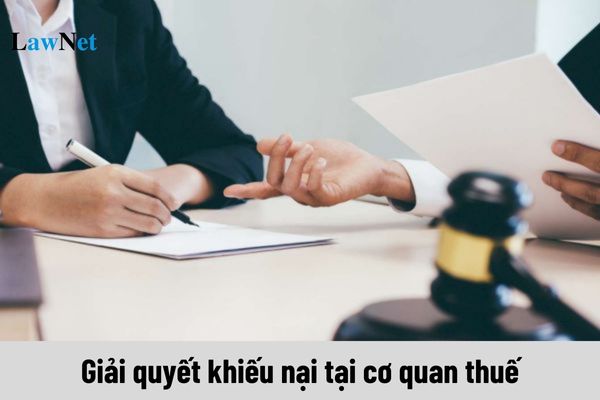What is direct consultation in complaint resolution at tax authorities in Vietnam?
What is direct consultation?
According to the provisions in Clause 3, Article 3 of the Regulation on direct consultation in complaint resolution at tax authorities, issued together with Decision 1490/QD-TCT in 2021, direct consultation is defined as the form of exchange, discussion, and direct opinion gathering on the resolution of complaints at tax authorities through the organization of consultation conferences.
Note: Tax authorities include: General Department of Taxation, Department of Taxation, Sub-department of Taxation, and Regional Tax Sub-department.
What are the principles of direct consultation in complaint resolution at tax authorities in Vietnam?
The principles of direct consultation in complaint resolution at tax authorities are stipulated in Article 4 of the Regulation on direct consultation in complaint resolution at tax authorities, issued together with Decision 1490/QD-TCT in 2021 as follows:
- Implement according to the provisions of the Law on Complaints, the Law on Tax Administration, and related legal documents.
- Consultations are conducted based on the principles of objectivity, democracy, open discussion, and decision-making by majority vote.
- The time for organizing and conducting consultations is counted within the complaint resolution time frame.
- Protect state secrets and ensure taxpayer information confidentiality in accordance with the law.

What is direct consultation in complaint resolution at tax authorities in Vietnam? (Image from the Internet)
What is the organization of direct consultation conferences in complaint resolution at tax authorities in Vietnam?
The organization of direct consultation conferences in complaint resolution at tax authorities is stipulated in Article 13 of the Regulation on direct consultation in complaint resolution at tax authorities, issued together with Decision 1490/QD-TCT in 2021 as follows:
[1] The organizing unit responsible for the consultation sends invitations (according to Form No. 04 issued together with Decision 1490/QD-TCT in 2021) to members of the council and other relevant units and individuals no later than 3 working days prior to the date of the consultation conference.
Note: The organizing unit for the consultation comprises the complaint resolution department at the tax authority, which includes: Internal Inspection Department; Complaint Resolution and Anti-Corruption Division under the General Department of Taxation; Internal Inspection Department or the unit assigned with complaint resolution tasks under the Department of Taxation; Internal Inspection Team or the unit assigned with complaint resolution tasks under the Sub-department of Taxation, Regional Tax Sub-department.
[2] Participants in the consultation conference include:
- Consultation Council;
- Organizing unit for the consultation;
- Members of the Inspection Delegation, or other relevant units and individuals invited to attend (at the request of the Head of the tax authority).
[3] The consultation conference can only proceed if the Chairman of the Consultation Council and at least 70% of the total members of the Consultation Council (including the Chairman) are present.
[4] The procedure for organizing the consultation conference:
Step 01: The Chairman of the Consultation Council introduces the attendees, states the reason, outlines the working format, and assigns an individual to record the consultation minutes.
Step 02: The representative of the organizing unit presents the content for consultation, highlights arising issues during the examination of the complaint resolution, including: practical obstacles, legal basis, opinions of the complainant and the respondent, and proposes resolution plans.
Step 03: Members of the Consultation Council express their opinions and propose solutions regarding the consultation content for complaint resolution.
In case the members of the Consultation Council unanimously agree on one resolution plan, this content is recorded in the Consultation Minutes, and no voting is required according to the below stipulation:
+ If the members of the Consultation Council do not unanimously agree on one resolution plan, they must vote on the complaint resolution plan.
+ Each member of the Consultation Council is allowed to vote for a maximum of one complaint resolution plan.
+ The Chairman of the Consultation Council takes opinions from the members on the voting method, either by show of hands or secret ballot.
If voting is conducted in the form of a secret ballot (Form No. 05 issued together with Decision 1490/QD-TCT in 2021), the Chairman of the Consultation Council must collect opinions from members to approve the Ballot Counting Committee.
Step 04: The Chairman of the Consultation Council announces the voting results for the members of the Council to know.
+ The voting results and members' opinions must be fully recorded in the Consultation Minutes (according to Form No. 06 issued together with Decision 1490/QD-TCT in 2021).
+ The Consultation Minutes must have the full signatures of attending members.
+ If any member of the Consultation Council does not sign the minutes, this must be noted in the Consultation Minutes, specifying the reason.

